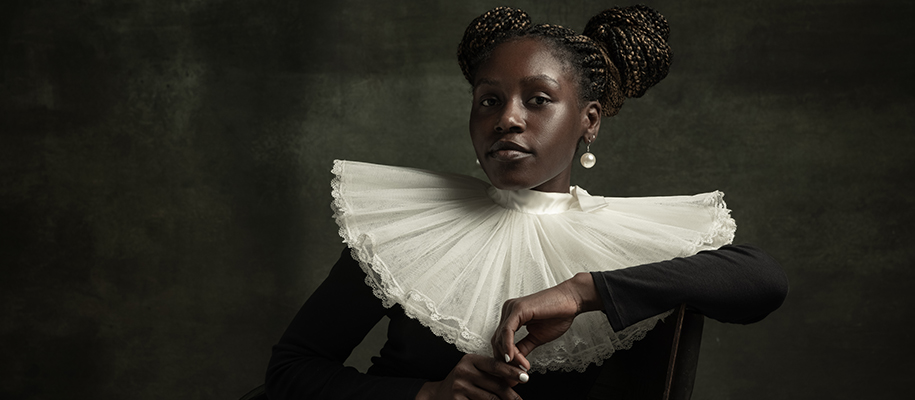Heroic Black women like Rosa Parks and Harriet Tubman are household names in the United States, but there are countless lesser-known Black women who had an enormous impact on Abolitionism, the Civil Rights Movement, and much more. As we continue to celebrate Black History Month, here are just five examples of Black female historical figures you probably didn’t learn about in school.
Dr. Rebecca Lee Crumpler
Rebecca Lee Crumpler (née Davis) grew up watching her aunt provide care to the sick. Wanting to follow in her footsteps, Rebecca became a nurse after graduating from the West Newton English and Classical School in Massachusetts. To take her health care career to the next level, she then attended the New England Female Medical College. Most male physicians at the time believed that women’s “sensitive and delicate nature” deemed them incapable of practicing medicine. Thankfully, the founders of the College disagreed. The New England Female Medical College accepted its first class, consisting of 12 women, in 1850.
By 1860, there were 54,543 physicians in the US. Only 300 of them were women—and none of them were Black. Four short years later, Rebecca became the first Black woman to graduate from the New England Female Medical College (now the School of Medicine at Boston University)—effectively making her the first Black female physician in the United States! Her desire to help others in the face of adversity is an inspiration to us all.
Related: Spotlight on Historically Black Colleges and Universities
Shirley Chisholm
Born in Brooklyn, New York, in 1924, “Fighting” Shirley Chisholm was born to two immigrant parents: a factory worker from Guyana and a seamstress from Barbados. She went on to graduate from Brooklyn College cum laude in 1946. Throughout school, she feared that her gender and race positioned her with a “double handicap.”
That “handicap” drove her to join local chapters of the League of Women Voters, the National Association for the Advancement of Colored People (NAACP), the Urban League, and the Democratic Party club in Bedford-Stuyvesant, Brooklyn. In 1964, Shirley mustered up the courage to run for the New York State Legislature and became the second Black American to serve. In 1968, she ran for Congress and won, becoming the first Black Congresswoman. While holding her seat, Shirley fought for racial and gender equality, impoverished people, and an end to the Vietnam War. In 1977, she became the first Black woman and second woman ever to serve on the powerful House Rules Committee.
Even more impressive, in 1972, Shirley became the first woman and first Black American to run for president for one of the two major political parties (the Democratic Party). Though she didn’t go far in the presidential race, she showed extraordinary resilience in the face of adversity. She said of her perseverance, “I want to be remembered as a woman…who dared to be a catalyst of change.” Shirley, you most certainly are.
Dorothy Height
Dorothy Irene Height was born in 1912 in Richmond, Virginia. Doctors predicted she wouldn’t live to see her 17th birthday as she was severely asthmatic—but were they ever wrong. After earning her Bachelor of Science in Education and master’s in Educational Psychology from New York University in just four years, Dorothy went on to become an activist who championed Black and women’s rights. She was hailed as the “godmother of the women’s movement,” holding a leadership position in the Young Women's Christian Association (YWCA) and acting as president of the National Council of Negro Women (NCNW) for over 40 years.
Using her background in education, Height coordinated “Wednesdays in Mississippi,” an open forum for both Black and White women to discuss race and social justice. In 1963, she helped to organize The March on Washington—and was also one of the few women present for Martin Luther King Jr.’s “I Have a Dream” speech. In her lifetime, Dorothy won three prestigious awards from US Presidents: In 1944, President Franklin Delano Roosevelt honored her with the Freedom from Want Award; in 1989, President Ronald Reagan awarded her with the Citizens’ Medal Award for distinguished service; and in 2000, President George W. Bush presented her with the Congressional Gold Medal and the Presidential Medal of Freedom. She died in 2010 at age 98 after an incredibly impactful life.
Related: Timeline of Important Events in Black History
Bessie Coleman
In 1892, Bessie Coleman was born in a one-room shack in Atlanta, Texas. She was one of 13 children in her family and her parents worked in the cotton fields, with Bessie sometimes joining them. She was an intelligent and driven girl, and after graduating high school, she applied to college—rare for anyone at the time, not just Black women—and even took up a laundress job to save money. Unfortunately, her savings ran dry after only one semester at school in Oklahoma.
Discouraged but optimistic, Bessie moved to Chicago in 1915 and quickly discovered her dream of wanting to fly. At the time, female pilots were few and far between, and none of them were Black. Racist American pilots laughed at her when she came to them looking to learn. Before long, word got out that a local Black woman wanted to become a pilot. Robert Abbott—a generous, outspoken activist and publisher of The Chicago Defender—had some advice for her: go to France. Abbott paid Bessie’s way to Paris to attend the famous flight school Ecole d’Aviation des Freres Cadron et Le Crotoy.
Bessie’s treatment in France was completely the opposite of what she experienced in America, and she earned her international pilot's license in 1921. She was the first American of any race or gender to be awarded credentials from the Federation Aeronitique Internationale in France. Nicknamed “Queen Bess,” she was “The Only [Black] Aviatrix in the World,” The Chicago Defender promoted. Bessie died in 1926, and each year on the anniversary of her death since 1931, Black pilots fly over her burial spot at Chicago’s Lincoln Cemetery to rain flowers down on her grave.
Daisy Bates
Daisy Bates was born in Huttig, Arkansas, in 1914. When she was just a toddler, her mother was killed by three White men. Her tragic death would ultimately drive Daisy to dedicate her life to championing racial equality. Daisy moved to Little Rock with her husband, where they started their own newspaper, The Arkansas Weekly. Daisy wrote and edited content for the paper, all of which was focused on the Civil Rights Movement. She also served as the President of the Arkansas chapter of the NAACP.
After the Supreme Court ruled segregated schools unconstitutional in 1954, the National NAACP office started to focus on Arkansas’s schools. Not only did Daisy call out schools that didn’t follow the federal mandate in The Arkansas Weekly, but she also selected nine students to integrate Central High School in Little Rock in 1957: The Little Rock Nine. She played a pivotal role in the students’ protection and success in school, despite often being victimized by threats of violence and even vandalism of her home.
Daisy continued working to improve life for the Southern Black community. She garnered national recognition for her work with the Little Rock Nine, and her book, The Long Shadow of Little Rock, won an American Book Award. On the third Monday of each February, the state of Arkansas still celebrates Daisy Gatson Bates Day, and honestly, we all should be!
Related: Four-Year Colleges With African/Black Studies Programs
Please share these stories so more people can know about these lesser-known important Black figures of history. We’d also love to hear your thoughts on these amazing women. Learning more about Black history is incredibly important—and not just during Black History Month. Learning about Black history is learning about our nation's history—and doing so will propel us into a more just and kind future.
Have you learned about our Black Heroes of History: 5 Unsung Male Figures? Keep reading to get to know some amazing men who have greatly impacted our country.







